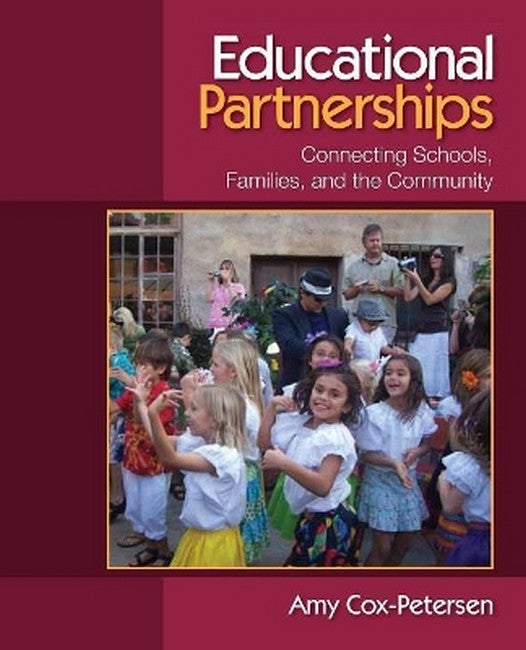Amy Cox-Petersen (Ph.D. [Curriculum and Instruction; Science Education Specialization] University of Southern California) is Professor in the Department of Elementary and Bilingual Education at California State University, Fullerton. Cox-Petersen received the Robert and Louise Lee Collaborative Award at Cal State Fullerton for her work with science professors across campus. She has written and received several grants related to service learning and collaborative partnerships with local schools and museums. Cox-Petersen has partnered with various organizations, schools, and interdisciplinary departments at Cal State Fullerton. As Science Education Specialist at the Natural History Museum of LA County, she helped to create partnerships within the educational community, with K-12 students and teachers, and with museum curators. As a public school teacher for 10 years, she collaborated with area businesses, universities, and parents. Cox-Petersen has published widely in leading education journals.
Request Academic Copy
Please copy the ISBN for submitting review copy form
Description
Preface PART I: THE BASICS OF EDUCATIONAL PARTNERSHIPS 1. The Importance of Educational Partnerships Overview of Educational Partnerships Examples of Partnerships The Value of Partnerships Communities of Practice Equitable Teaching and Learning Types of Educational Partnerships Collaborative Descriptions Home, School, and Community Influences Partnership Types, Examples, and Characteristics Chapter Summary Case Studies Reflecting on the Cases Activites for Further Development Additional Reading and Information 2. History of Educational Partnerships Goals of Education Types of Schools Students and Families as Part of a System Social and Cultural Capital History and Policy Related to Educational Partnerships Educational Policy -Whose Policy? Who's Excluded? Overview of Educational Learning Theories Chapter Summary Case Studies Reflecting on the Cases Activites for Further Development Additional Reading and Information 3. Meeting the Needs of All Children in the 21st Century The Implementation of No Child Left Behind Children With Special Needs Children's Well-Being Nutrition and Children's Well-Being Chapter Summary Case Studies Reflecting on the Cases Activities for Further Development Additional Reading and Information 4. The Makeup of Families Today: Culturally Relevant Strategies to Enhance Partnerships Families in the 21st Century Family Participation Initiatives A Culturally Responsive Partnership Between Home and School Tips for Families and Teachers During: Parent-Teacher Conferences Chapter Summary Case Studies Reflecting on the Cases Activites for Further Development Additional Reading and Information PART II: BUILDING EFFECTIVE PARTNERSHIPS 5. Building Family-School Partnerships Effective Partnerships With Families Elements of Family-School Partnerships Six Types of Family Involvement Family Involvement in the 21st Century Tips for Families and Teachers Chapter Summary Case Studies Reflecting on the Cases Activites for Further Development Additional Reading and Information 6. Schools and Community: Working Together and Respecting Diversity Expanding Educational Partnerships School, Community, and Business Partnerships Community Partnerships Students Taking Action as Community Members Tips for Building School-Community Partnerships Chapter Summary Case Studies Reflecting on the Cases Activites for Further Development Additional Reading and Information 7. Partnering With Community Organizations and Resources Partnerships Beyond the Four Walls of the Classroom University-School Partnerships Partnerships With Museums and Cultural Institutions National/Local Parks and Outdoor Education Tips for Organizing and Participating in Field Trips Chapter Summary Case Studies Reflecting on the Cases Activites for Further Development Additional Reading and Information 8. Barriers to Partnerships Culturally Relevant Teaching and Learning Barriers and Challenges That Partnerships Face Strategies to Address Barriers Taking Action Tips to Help Overcome Barriers and Promote Diversity Chapter Summary Case Studies Reflecting on the Cases Activities for Further Development Additional Reading and Information PART III: PLANNING FOR AND SUSTAINING SUCCESSFUL PARTNERSHIPS 9. Seeking and Sustaining Successful Partnerships Partnership Examples Seeking and Organizing Partnerships Writing Grants That Support Teaching and Learning Seeking Grants to Support and Acknowledge Teachers Communicating With Families About Resources Interagency Collaboration Chapter Summary Case Studies Reflecting on the Cases Activities for Further Development Additional Reading and Information 10. Planning for Partnerships Creating an Action Plan Stages of the Planning Process Implementing Your Action Plan Chapter Summary Case Studies Reflecting on the Cases Activites for Further Development Additional Reading and Information 11. Implementing and Sustaining Successful Partnerships Characteristics of Successful Partnerships Revisited Parents, News, and Misconceptions Professional Education Partnerships Teachers as Reflective Practitioners Implementing and Sustaining Educational Partnerships Long-Running Partnership Examples Local Libraries and Activities Implementing and Sustaining Partnerships With Families Tips for Implementing and Sustaining Partnerships Final Comments Activites for Further Development Additional Reading and Information Glossary References About the Author Index

